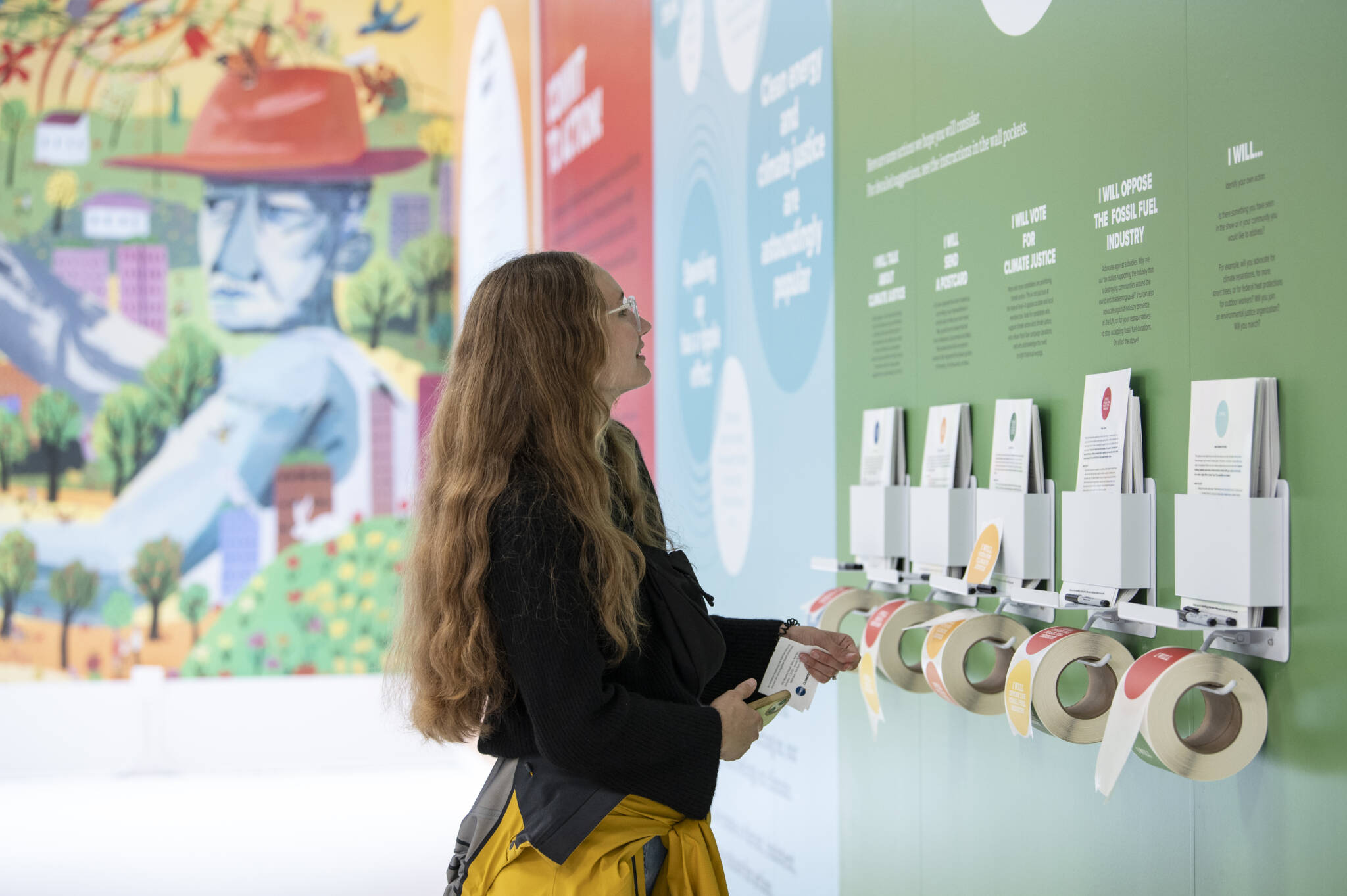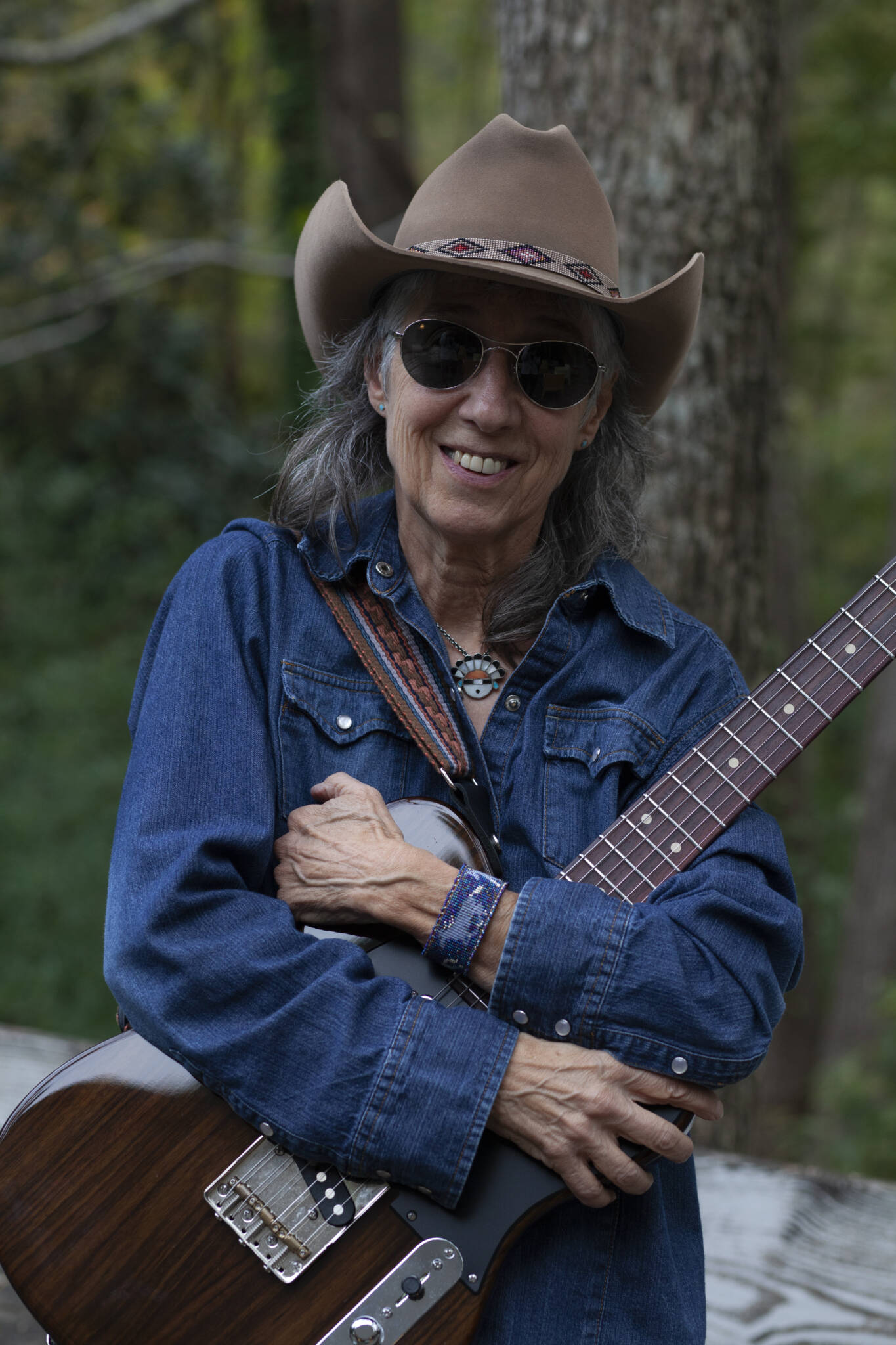If you’re in New York City or planning a trip before the end of April 2024, I encourage you to head to Soho to check out the Climate Museum located at 105 Wooster Street.
The museum, founded five years ago, has curated exhibits and programs specifically about climate change in several pop-up locations in the city. Now in their temporary home (4,200 square-feet) for the next few months, they have a new exhibition, The End of Fossil Fuel, that includes informational panels and artwork.
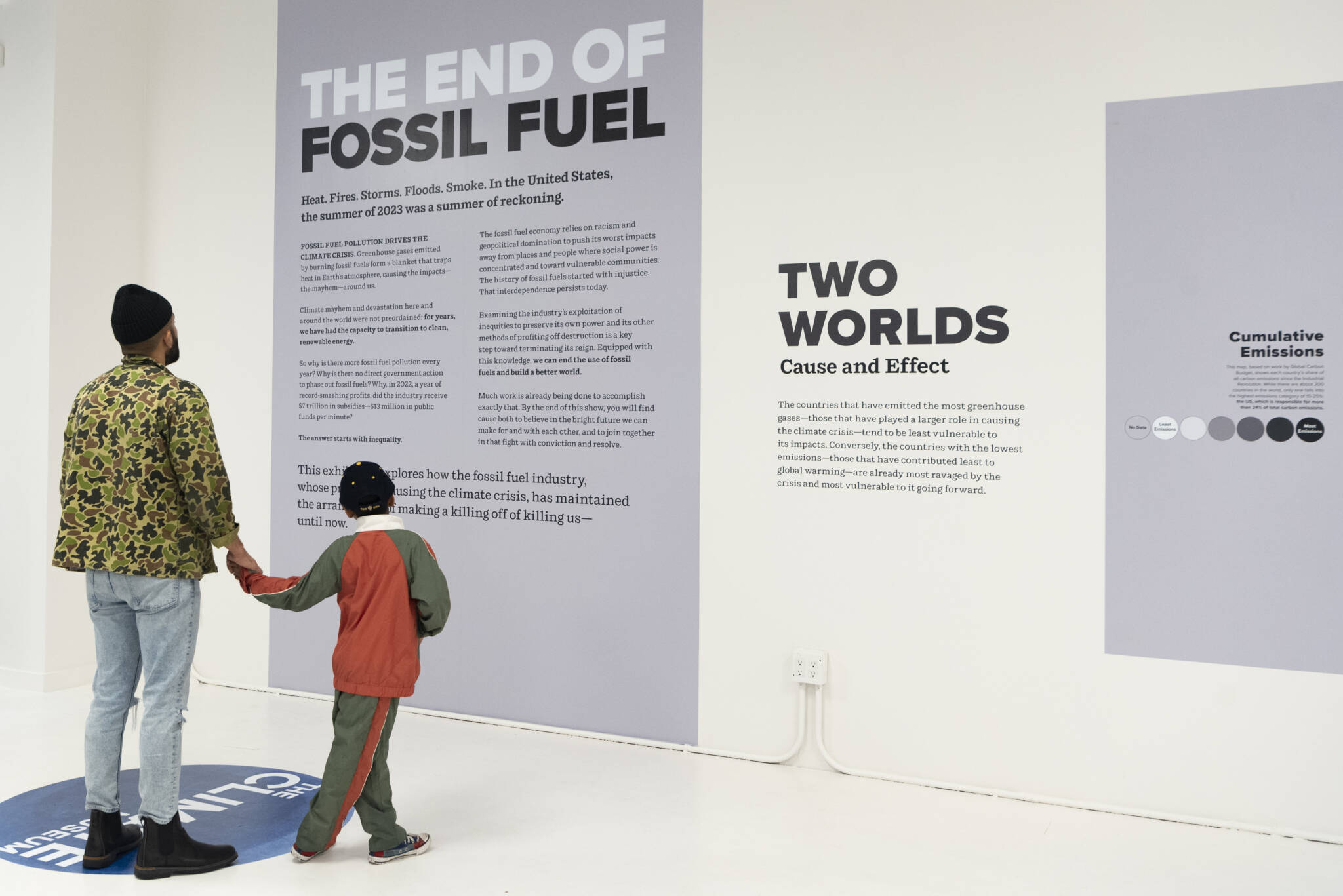
For those of you familiar with Soho, it is a shopping destination for New Yorkers and tourists with many highend retailers. Admission to the museum is free and since opening its doors at its Soho location in December visitors have include tourists who happen to be in Soho, student groups, and folks who came to Soho specifically to check out the exhibit. The exhibition displays provide information about which countries are responsible for the greatest amount of pollution and which countries are the most impacted.
There are also displays that show the New York City neighborhoods that have been adversely impacted by redlining and predatory mortgage loans, and how these neighborhoods are the victims of racial inequality. Not surprisingly, these are the same neighborhoods who are at greater risks, physically and financially during adverse weather conditions and climate disasters, including Hurricane Sandy in 2012.
One of the most prominent pieces of the exhibit is the 12-by-45-foot mural by R. Gregory Christie, an author and illustrator who left NYC ten years to relocate to Stone Mountain, Georgia. Christie is the artist who created one of the Kwanza stamps issued by the United States Postal Service. The mural evolves with depictions of America’s industrial past and resolves with images of houses, trees and flowers, and the sowing of seeds for the future.
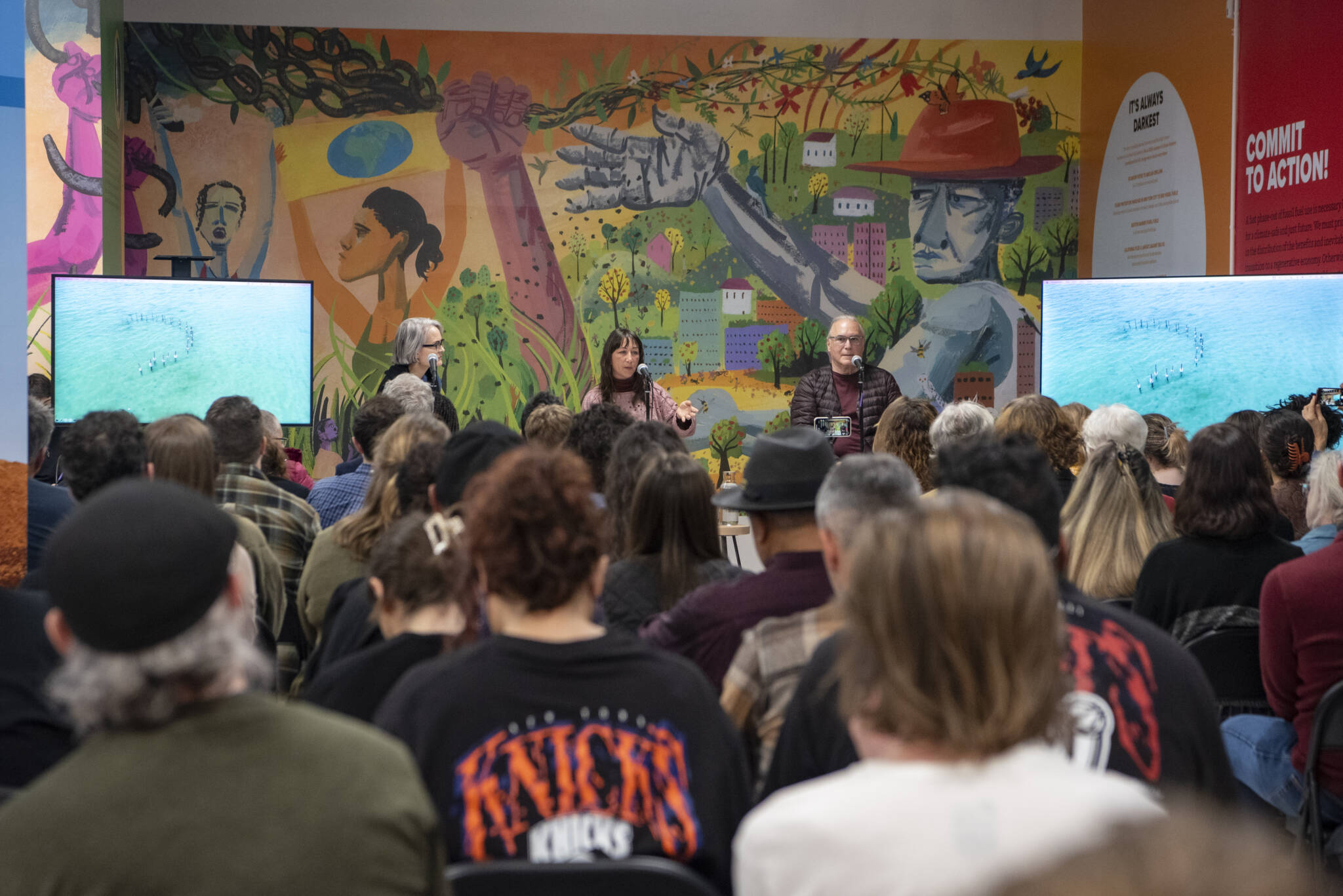
Miranda Massie, a social justice lawyer, is the creator and founder of the Climate Museum, the first of its kind in the United States. The first climate museum was in Hong Kong.
Today, there are climate museums in Chicago, Houston, Germany and the Philippines. The Climate Museum, a nonprofit organization founded in 2018, has as its mission, according to Massie is “to educate the public and to get them to take civil action.”
Why a climate museum?
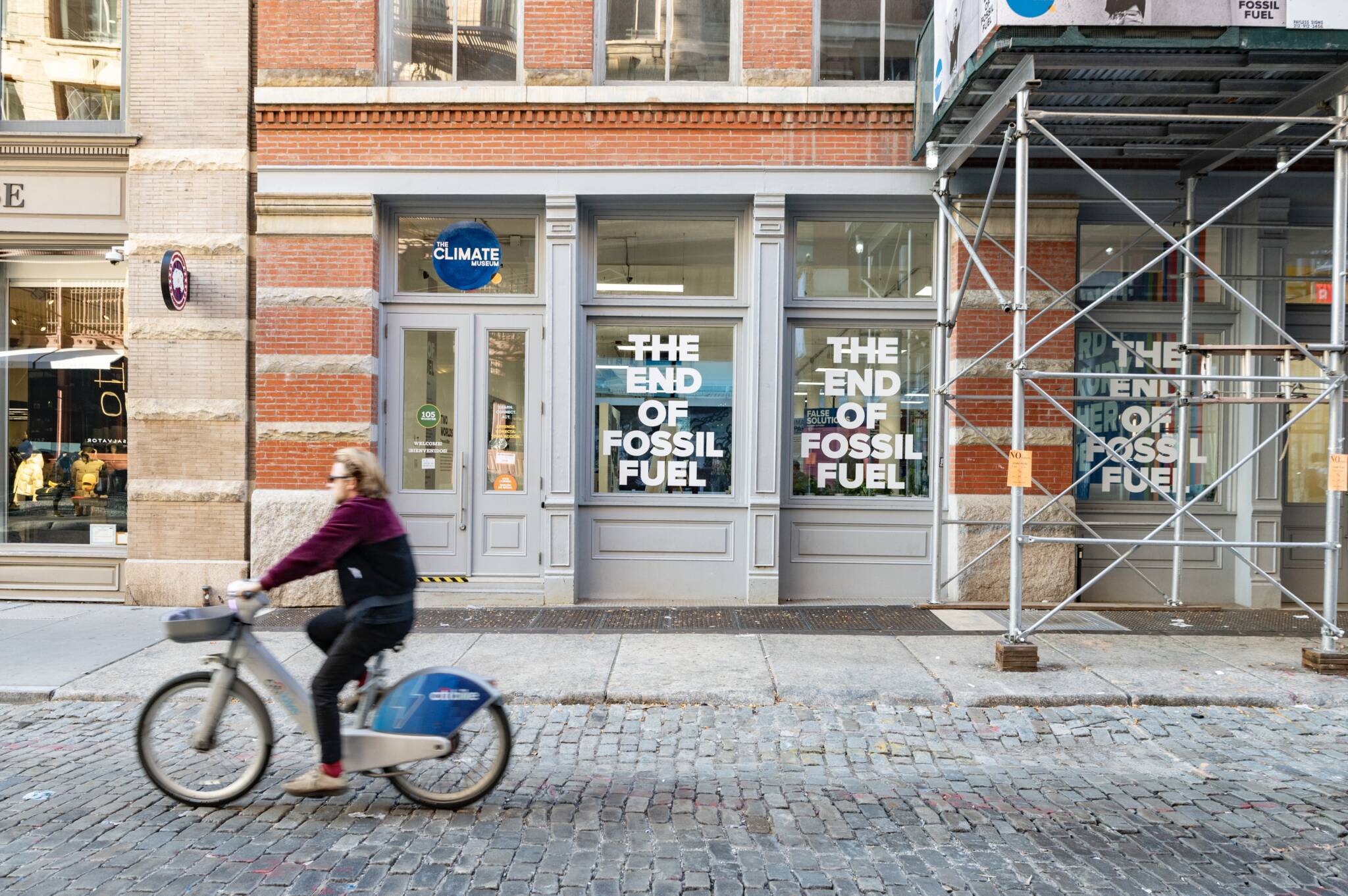
According to Dr. Cynthia Rosenzweig, a Climate Museum board member and senior scientist at NASA’S Goddard Institute for Space Studies, “The science appeals to people’s brains. But art appeals to people’s emotions.” Saskia Randle, Design and Curatorial Associate at the Climate Museum, was kind enough to answer a few questions that I emailed her.
1. Do you have an idea of the number of visitors who have come through the doors of the Climate Museum since its founding?
“Since 2018, the Museum has presented eight and co-presented five exhibitions and major art installations, welcoming over 100,000 visitors.”
2. In 2019, the museum launched the Climate Action Leadership Program (CALP) for students in grades 9-12. How many students have participated in CALP? Can you give a couple of examples of projects that the students have started?
“Over 500 high school students have participated in the Climate Action Leadership Program. As part of the program, some students have developed climate action plans to implement in their communities. Project examples include beginning their own climate podcasts, organizing climate protests, arranging assemblies on climate for their schools, and more. CALP participants also have the opportunity to participate in workshops exploring climate justice and advocacy, art for climate action, climate communications, poetry, and more.”
3. Along with the exhibits itself, the museum also organizes panels and workshops. Do you have an idea of how many have taken place? Have these events helped to facilitate community action? If so, do you have an example or two.
“Since 2018, we have hosted over 300 events—including panels, workshops, screenings, performances, and more—featuring a range of climate leaders (including 350 co-founder Bill McKibben!). These events have explored arts, justice, storytelling and communications, movement-building, science, history, psychology, and more. Like all of our programming, our events are ultimately about inviting visitors and attendees to take climate action in community with one another.
As an example, in March 2023 we partnered with NY Renews, a statewide coalition of climate justice, labor, community, and faith organizations, to host a teach-in and reception for the Climate, Jobs, and Justice Package, a legislative package that would make New York a leader on climate justice and set a new
national standard for climate and environmental policy. The event educated attendees on what this legislation would accomplish and how we can all get involved.”
4. What are the future plans for the museum?
“Our current exhibition space in Soho is open through the end of April 2024. After that, we hope to continue providing this programming to more and more people by opening a year-round Climate Museum in transit-accessible New York City.”
To learn more about the Climate Museum, visit their website: www.climatemuseum.org
Photos below for the exhibition, The End of Fossil Fuel, are courtesy of the Climate Museum.
Photo credit: Sari Goodfriend.
